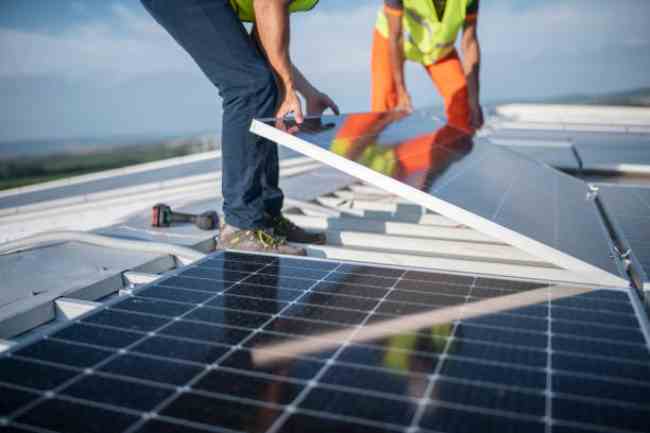Photovoltaic (PV) panels have emerged as a key player in the renewable energy landscape, harnessing sunlight to generate electricity. This process, known as the photovoltaic effect, is the foundation of solar power systems. Let’s delve into the intricate science behind how photovoltaic panels convert sunlight into electricity.
Semiconductor Structure
PV panels are primarily composed of semiconductor materials, typically silicon. Silicon atoms are arranged in a crystalline structure, forming a lattice. Within this lattice, there are ‘holes’—empty spaces where an electron should be—and ‘free electrons’. When sunlight hits the panel, it triggers a reaction within this semiconductor material.
Photon Absorption
Sunlight consists of photons—tiny packets of energy. When sunlight strikes the surface of a PV panel, photons with sufficient energy can dislodge electrons from their positions in the silicon atoms. This interaction is where the magic begins.
Electron Excitation
When a photon is absorbed by a silicon atom, it transfers its energy to an electron, exciting it to a higher energy level. This electron is now free to move within the semiconductor lattice, leaving behind a hole in its previous position.
Generation of Electron-Hole Pairs
The absorption of a photon results in the creation of an electron-hole pair. This pair consists of a negatively charged electron and a positively charged hole. They are both free to move within the semiconductor material.
Separation of Charges
Due to the internal electric field within the semiconductor material, the negatively charged electrons are pushed towards the N-type (negative) layer, while the positively charged holes are pushed towards the P-type (positive) layer. This separation of charges creates an internal voltage potential.
Electrical Current Generation
With the electrons moving in one direction and the holes in the opposite direction, a flow of electric current is established. This flow of electrons constitutes electricity. By connecting the PV panels to an external circuit, this generated electricity can be harnessed for various applications.
Direct Current (DC) Output
The electricity generated by PV panels is in the form of direct current (DC). This means that electrons flow consistently in one direction. However, most household appliances and the electricity grid operate on alternating current (AC). Therefore, an inverter is typically used to convert the DC electricity from the panels into AC electricity, making it compatible with the electrical grid.
Utilization and Storage
The electricity generated by PV panels can be utilized immediately to power homes, businesses, or other electrical devices. Excess electricity can be fed back into the grid if the system is grid-tied, or it can be stored in batteries for later use in off-grid systems. This flexibility makes solar energy a versatile and reliable source of power.
Efficiency Considerations
The efficiency of a PV panel refers to the percentage of sunlight that is converted into electricity. Various factors such as the quality of the semiconductor material, panel design, environmental conditions, and orientation affect the efficiency of PV panels. Ongoing research and technological advancements aim to improve efficiency and reduce the cost of solar energy production.
Environmental Impact
One of the most significant advantages of photovoltaic panels is their minimal environmental impact compared to traditional fossil fuel-based energy sources. Solar power generation produces no greenhouse gas emissions or air pollutants during operation, contributing to cleaner air and mitigating climate change.
In conclusion, photovoltaic panels harness the power of sunlight through the photovoltaic effect, converting photons into electricity using semiconductor materials. This process involves the absorption of photons, generation of electron-hole pairs, separation of charges, and the flow of electric current. With increasing concerns about climate change and the need for sustainable energy sources, photovoltaic technology plays a crucial role in the transition towards a cleaner and more sustainable energy future.



